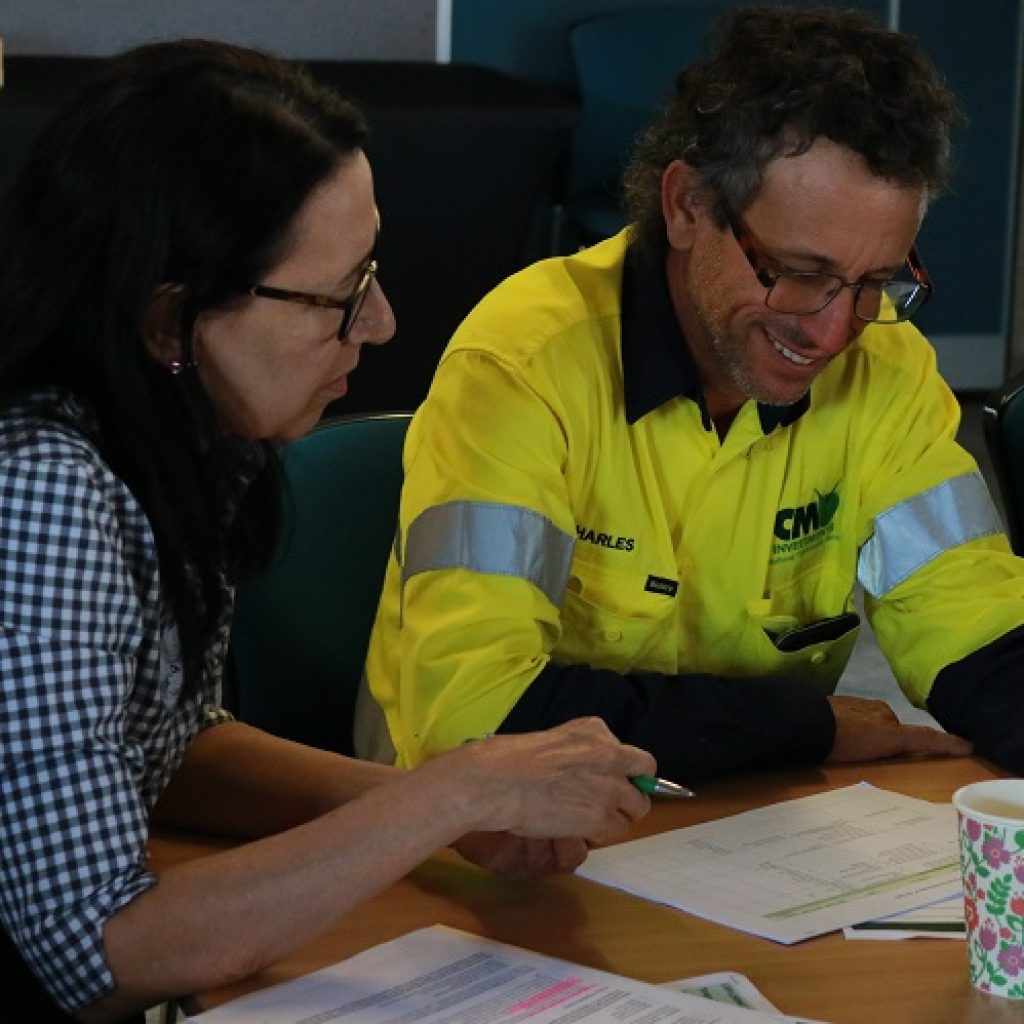HERBERT RIVER EROSION SOLUTIONS
TREE ROOTBALLS PART OF EROSION SOLUTION
DECEMBER 2024
The rootballs of trees are part of a new engineered solution for erosion along the Herbert River near Ingham.
About 180 metres of flood-damaged riverbank has been repaired using five rootballs combined with more than 2000 tonnes of rock – for a rockwall with a difference.
Strengthening riverbanks, creating fish habitat
Terrain NRM’s Lana Hepburn said the result would both strengthen the riverbank and create fish habitat.
“The hardwood is wedged trunk-first into the lower riverbank so the rootballs are in the water, with rock benching holding them in place,’’ Lana says.
“The rootballs add complexity to the waterway, creating eddies and different flow rates which moves the fast-flowing water away from the toe of the streambank to prevent more erosion. They also create places for fish to rest and feed.
Erosion since 2009 wet season
She said the riverbank had been eroding at the site since 2009 and the 2021-22 wet season had worsened things, with more riverbank vegetation lost to flooding.
“Since 2009, the riverbank has retreated 20 to 40 metres on average across the site. The toe of the riverbank – the point where the riverbed meets the bank and supports the weight of the bank –became completely unvegetated. So when the 12 metre high bank was hit by fast water, it was eroding at the toe and collapsing, sending soil down the river and fine sediment out to the ocean.”
Cane farmer Mark Zatta, whose land borders the river, says he’s “stoked”.
“Originally we had about 50m of rainforest along the river but we were losing it over time. All of a sudden, in one river rise, a whole lot was gone. Once the first wall (of riverbank) dropped, it just kept collapsing. It’s on the outside of a bend in the river where the river pushes around.

Revegetation the next step
“The area where the work is has also been grassed now and it has taken off. They’ll be planting trees, as part of the project, after the wet season. That’s great. And the rootballs have already created new spots for fish. We’ve seen sooties (sooty grunter) swimming around everywhere.”
Lana says a pile field was originally intended for the erosion site. But when the streambed was found to be rock solid, preventing piles from being driven into it, engineers reverted to the next best thing – a rootball rockwall.
The recently completed remediation work is the latest in a series of construction projects along the Hebert River system, which is one of Queensland’s five highest contributors of fine sediment to the Great Barrier Reef.
Preventing 3800+ tonnes of fine sediment from flowing to the Reef
This project, which is focused on two erosion sites in the lower Herbert catchment, is part of the Queensland Government’s $6 million investment into streambank remediation funded through the Queensland Reef Water Quality Program. It aims to improve the land and prevent more than 3800 tonnes of fine sediment from flowing to the Great Barrier Reef each year.
RELATED NEWS
Blending traditional knowledge and science
 admin@terrain
admin@terrain
 July 3, 2025
July 3, 2025
Improving water quality
 Elaine
Elaine
 January 22, 2025
January 22, 2025
Tree rootballs part of erosion solution
 Elaine
Elaine
 December 16, 2024
December 16, 2024






























